HR Analytics
Use Intellicus HR analytics to get an overall view of the HR operations and their impact across the organization. Make data-driven decisions to enhance recruitment, retention, and engagement. Utilize predictive analytics to efficiently distribute resources and make futuristic strategies to stay a step ahead.
Improvise Workforce Planning
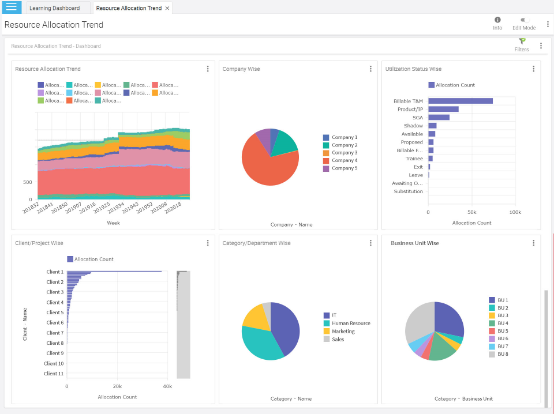
- Understand the company-wide demand and allocation of resources and take corrective actions for better distribution.
- Analyze data to find out which teams are executing on time and which are overburdened. Understand how this is affecting engagement, productivity, and revenue.
- Stay a step ahead by predicting the potential demand gaps and competency issues. For dynamic workplaces like call centers or any customer-facing business, predict the day-to-day requirements and allocation needs, and maintain a steady supply of resources.
- Utilize HR analytics to improve succession planning, set training calendar, and ensure smooth progression in everyday tasks.
Employee Performance Management
Track employee performance trends and identify core factors contributing to the overall performance of an individual. Recognize your best and worst performers. Spot the early warning signs and identify the prime issues impacting work. Address these problems and understand how to regenerate engagement and boost productivity. Enable employees to track their goals and KPIs and identify the areas where their performance is good and where they can improve.
Streamline your annual process and make it time-efficient, helping to identify the day-to-day barriers and enabling quick actions. Align your organizational goals with the employees as well as team performance over time. Identify whether the goals are on track. Have a company-wide view of the strengths and weaknesses of each employee, team, and department. Know, if there is a dearth of resources or competency in a department to reach a key target.
Assign competency scores and find out the need for training & development using it. Identify your top performers and reward them as required. For underperformers, find out the root cause of low performance and rectify it. Check the alignment of your goals, performance, and revenue. Predict the potential red-flags and resolve them before they occur. Identify the traits of a leader and improve succession planning and resource allocation for optimized performance.
Attrition & Retention Management
- Identify your best resources and improve their retention with HR analytics generated insights. Predict the potential employees who are on the verge of leaving and take relevant steps to keep them on-board and engaged.
- Find out the relation between attrition, revenue, and other KPIs. Analyze historical data points like promotions, leaves, incentives, reviews, commute, training, and more to find out the underlying issues causing attrition. Revamp your retention strategy based on these findings.
- Equip the direct manager with the right insights to resolve the issue at the primary level itself. Further analyze resignation data to find patterns and recognize which team, location, or department is most vulnerable. Invest your time, money, and efforts to stabilize it.
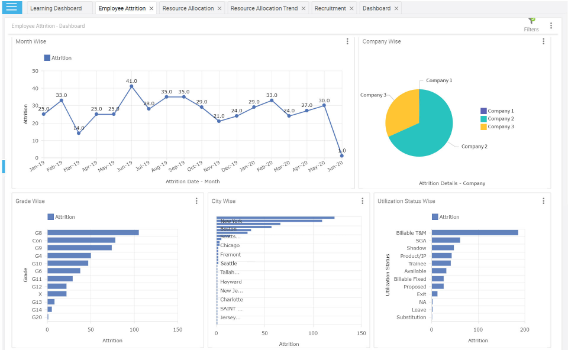
Talent Acquisition Analytics
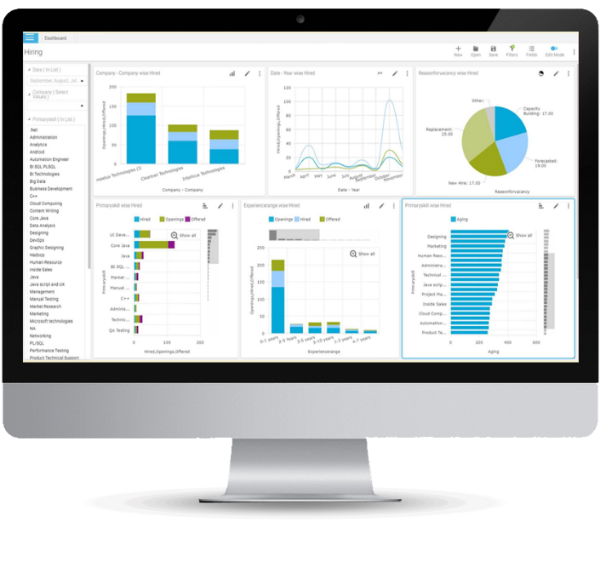
Understand the efficiency of your current recruitment process. Have a step by step look at the complete structure and spot the issues constricting the entire operation. Identify which talent acquisition channel like various job boards, 3rd party recruiters or in-house team is delivering more quality candidates and which is contributing to a high turnover rate. Direct your resources and efforts in optimizing the best source and removing the underperforming ones.
Get a 360-degree view of the process by analyzing historical recruitment data, quality of hire, time to fill, cost-to-hire, and other KPIs, and tracking the status of current job applications. Find the most appropriate rate to hire and retain, an apt time to fill a position and right location to look for a specific profile. Monitor the various employee diversity criteria and ensure the industry standards are being met. Make the entire process affordable, quick, and seamlessly smooth. Reach the right candidate with insights being available at every stage to everyone and visualized in the most understandable manner.
Enhance Employee Engagement
Increase your workforce productivity by analyzing how engaged your employees are. Find the relationship between your employee engagement and the organization’s profitability. Use these insights to align your strategic goals with performance data. Among various engagement activities, utilize your data to identify which ones have a better success rate and which are insignificant. Invest your resources in more engaging activities and identifying new ways of engagement.
Use employee surveys to recognize existing workplace bottlenecks and find which corporate policies and cultural elements are most important to the employees. With engagement and sentiment analytics, gauge the overall sentiments, identify aggrieved employees, and find possible reasons for your top performers’ declining engagement. Make data-driven decisions to revamp the organization’s policy based on what keeps your employees most engaged and productive.
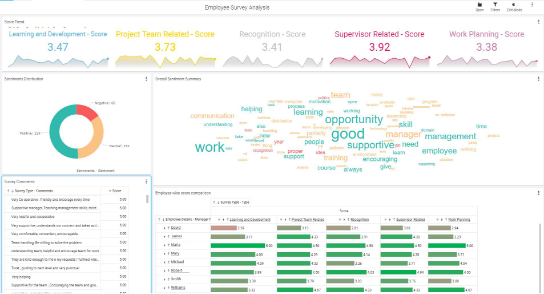
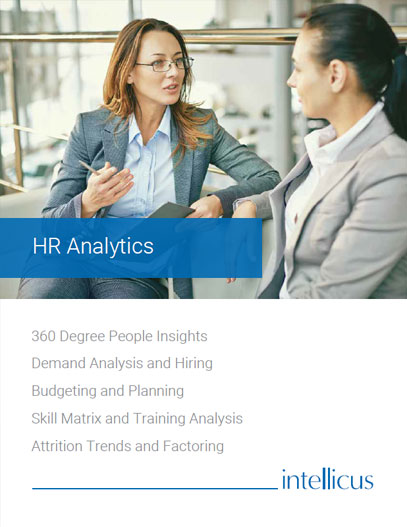
360 Degree HR Insights
Organizations today demand scientific methods to understand human resource needs and nurture people to make the business efficient. Knowing the demand of counts and skills and planning for hiring, training and reskilling, is key to any successful business. Intellicus powered by machine learning based HR analytics gives business leaders insights into demand and distribution of people, prediction of attrition, what-if in budgeting and many more.